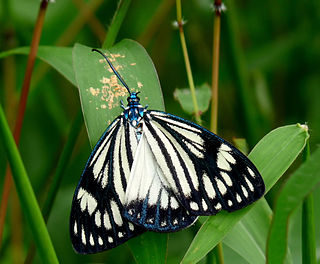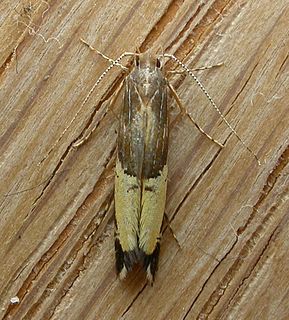
The Zygaenidae moths are a family of Lepidoptera. The majority of zygaenids are tropical, but they are nevertheless quite well represented in temperate regions. Some of the 1000 or so species are commonly known as burnet or forester moths, often qualified by the number of spots, although other families also have 'foresters'. They are also sometimes called smoky moths.

Alexander Walker Scott was an Australian entomologist mainly interested in butterflies.

The dryandra moth is a species of moth that is considered to be the sole member of the family Carthaeidae. Its closest relatives are the Saturniidae and it bears a resemblance to many species of that family, bearing prominent eyespots on all wings. The common name is derived from the Dryandra shrubs of the genus Banksia, on which the larva of this species feed, and is hence restricted to the south-west of Western Australia where these shrubs grow. Other Grevillea shrubs may also be used as host plants.

Digama is a genus of moths in the family Erebidae described by Frederic Moore in 1858. It is distributed in South Africa, China, throughout India, Sri Lanka, Myanmar and Australia.

Utetheisa pulchelloides, the heliotrope moth, is a moth of the family Erebidae. It is found in the Indo-Australian region including Borneo, Hong Kong, New Zealand, Papua, Seychelles, most of Australia and Tenerife. The species was first described by George Hampson in 1907.

Agamana is a genus of moths of the family Erebidae. The genus was erected by Francis Walker in 1866. These moths are mainly found in the Australian continent and Indian subcontinent. These are not considered very rare, but very little is known about these species.

Labdia is a genus of moths in the family Cosmopterigidae.

The Autostichinae are a subfamily of moths in the superfamily Gelechioidea. Like their relatives therein, their exact relationships are not yet very well resolved. The present lineage was often included in the concealer moth family (Oecophoridae), but alternatively it is united with the Symmocidae sensu stricto to form an expanded family Autostichidae.
Oswald Bertram Lower was an Australian chemist and pharmacist who is best known for his contributions to entomology, in particular butterflies and moths. His collection is now at the South Australian Museum.

Xyloryctidae is a family of moths contained within the superfamily Gelechioidea described by Edward Meyrick in 1890. Most genera are found in the Indo-Australian region. While many of these moths are tiny, some members of the family grow to a wingspan of up to 66 mm, making them giants among the micromoths.

Miscera is a genus of moths in the family Brachodidae.
Acrolophus cosmeta is a moth of the family Acrolophidae. It is found in South America.

Gracillariinae are a subfamily of moths which was described by Henry Tibbats Stainton in 1854.









